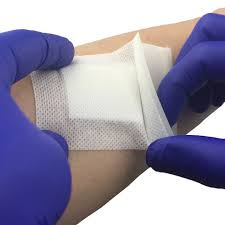
In emergency situations, knowing how to manage severe bleeding can save a life. Whether the blood is caused by an accident, injuries or an unexpected medical condition, heavy bleeding can quickly become life-threatening if it isn’t addressed immediately. This guide will walk you through the actions you should take if you come across someone who is bleeding heavily.

Apply Direct Pressure
Using a clean cloth, bandage or even clothing, apply firm and continuous pressure directly to the wound. Direct pressure helps to stem the flow of blood and lets the body’s natural clotting mechanisms begin working. If the bleeding is severe, do not remove the cloth if it becomes soaked with blood – instead, add more layers and continue applying pressure.
Call for Emergency Help
Immediately call 999 to get professional medical help on the way. Provide clear information about the location and the nature of the injury. Stay on the line if instructed and follow any guidance that the emergency operator gives you.
To learn more about how to deal with emergency situations, consider looking at emergency first aid training courses such as those at https://www.tidaltraining.co.uk/emergency-first-aid-training-courses.
Public Access Trauma First Aid Kit
In emergencies, especially those involving severe injuries, having immediate access to specialised medical supplies can make a big difference in outcomes. Public Access Trauma (PAcT) First Aid Kits are designed for just such situations. They are often found in public spaces like workplaces or schools and provide bystanders with the tools needed to administer lifesaving first aid before professional help arrives.
Contents of PAcT First Aid Kits
A PAcT First Aid Kit typically contains the following items:
1. Tourniquet: Used to control severe bleeding from a limb when direct pressure is not enough.
2. Dressings: Large, absorbent dressings that can cover different-sized wounds to protect the wound from contamination.

- Gloves & face shields: Disposable medical gloves to keep a clean, sterile environment.4. Instructions: Simple, clear instructions on how to use each item in the kit. These may include diagrams or quick reference guides to assist even those with no prior medical training.

